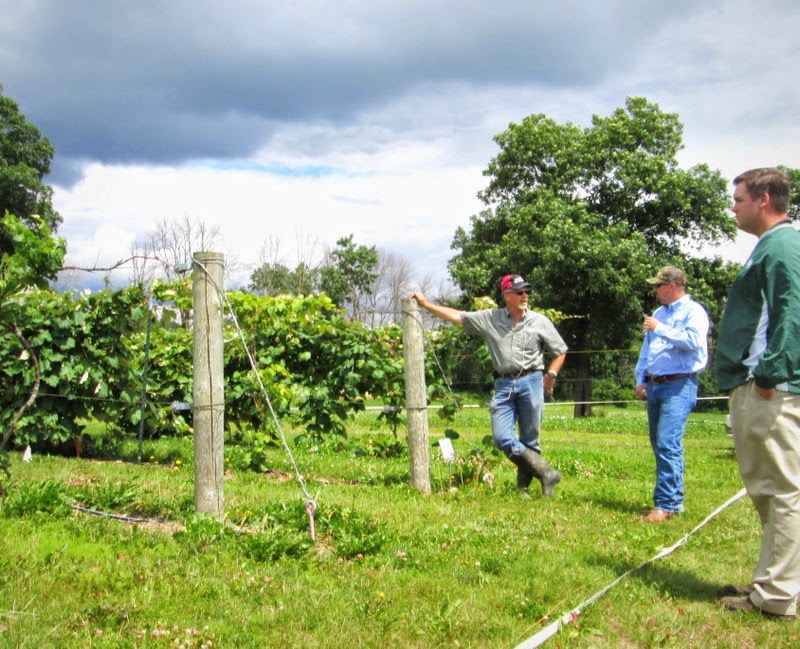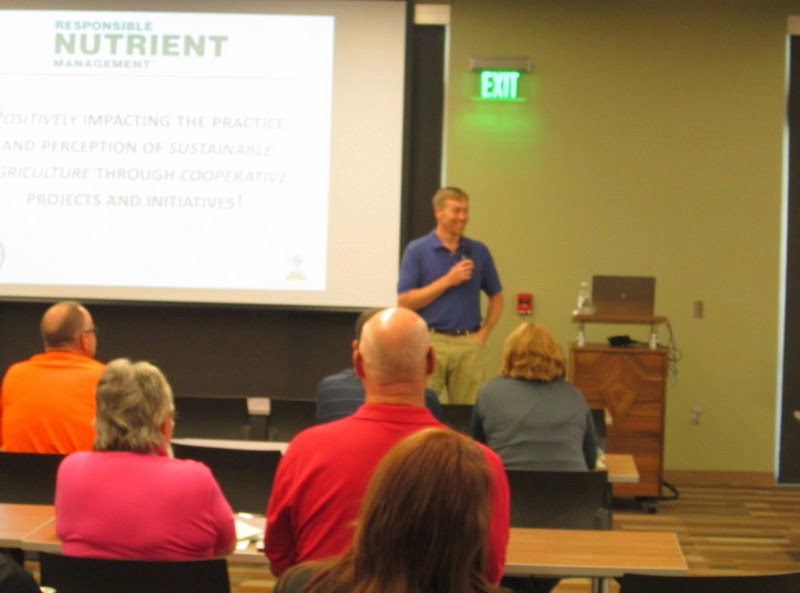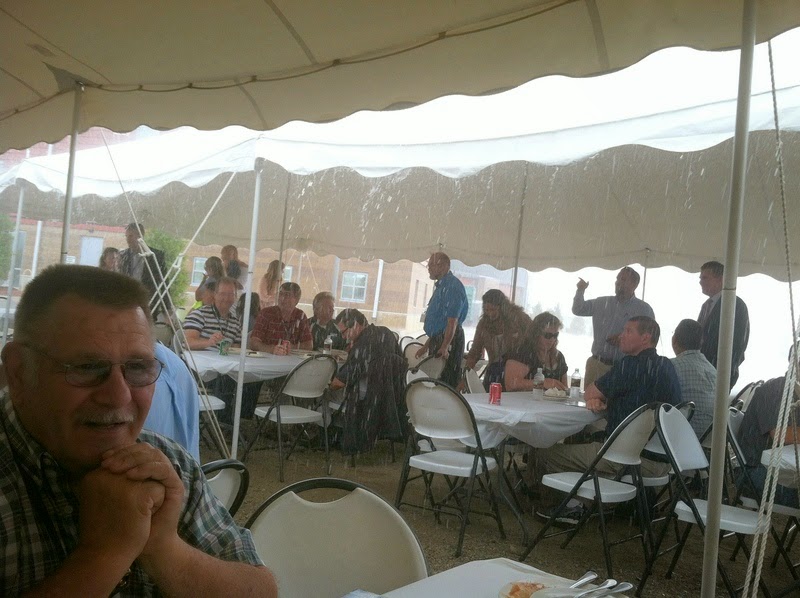So I made my way to Baltic, SD last Thursday for the Ag PhD Field Day. This is the fifth one that I have been to, and it gets bigger and better each year. The weather for the day was sun/rain/sun/rain etc. But it definitely wasn't a washout. Thousands of visitors made their way around the displays.
This year AgroLiquid had one of the new vans on display by the fertilizer plots. Certainly an eye catcher.
And we had the A-Team on hand to represent Liquid. Here are AM Chad, Lonny, RSM Stuart, Troy, Reid, me, SAM Bruce, Stephanie, SAM Brad and truck driver Matt. At your service.
Here is where the Liquid tent was looking up tent row at the very start of the day. See the sign?
Now this was a plot bonus: in late June in the Liquid soybean plot there was a lightning strike. There were fried remnants of soybeans to mark the spot. There was a guy in a building nearby who said it was a blinding light flash and a very loud thunder clap. Yep, sounds like lightning to me. Now in this particular plot, there was no Micro 500. In the plot to the rear there was, and lightning didn't strike there. So it shows that you need to get your fertility up to specs to be ready for anything.
Probably one of the show highlights is the plot tour lead by Brian and Darren, seen in the elevated flatbed. They go through and point out the various seed plots, chemical plots, equipment and fertilizer. Actually, Liquid fertilizer was used in some fashion in all of the planted plots.
One interesting display was of some new soybean genetics by BASF. This line has resistance to a new formulation of dicamba herbicide, which is Banvel. But the new formulation is to be called Engenia. The weeds were all curled and twisted like dicamba. But the beans were fine. Well it is a few years from being on the market. They did have some security rules to follow. The area was roped off, and you had to sign your name to be allowed in. And you couldn't touch the plants or stand in them either. Boy, is he strict! But this will be another tool as glyphosate resistance spreads.
There was also a new Hagie sprayer system on display for pre-harvest application of cover crop seed in standing crops.
You do have to have a special seed tank and blower system. But the seeds hit these plates and are scattered out for even distribution and germination. Then after harvest, the stand is established much more quickly than planting after harvest.
There is Troy watching a tile demonstration. I think he is enamored by the green paint. That tractor was barely above idle as it pulled the tile plow.
And in addition to the Liquid tent, there was a display by the Responsible Nutrient Management Foundation. This is to publicize the existence and mission of the Foundation. There are a number of company members, and interest by more. This is not a money foundation, but rather an in-kind foundation where the members all contribute in work to support the cause. Troy is ready for the message to take off. Or I think that is what he is doing.
Then there was some other things to do and watch. Like the Vanguard Squadron put on an aerial display. They are based in South Dakota and are the only flight team whose planes are powered by 100% ethanol.
One of the guest speakers was Bobby Knight. If you are one of the few that don't recognize that name, he was a famous college basketball coach who coached Indiana to three national championships and was the 1984 head coach of the team that won an Olympic gold medal. But he was full of fire and controversy. But he gave an inspirational talk about leadership, preparation and building self reliance. One quote worth pondering: Most people have the will to win, but few have the will to prepare to win. Probably so.
Then there was a Q&A session. Now one of the things that he is most known for is a 1985 incident in a game against Purdue where he got mad at the refs and threw a chair onto the court. Now he wasn't throwing it at anyone. But it did lead him to getting tossed from the game. So questions still persist. I thought he would get miffed when a question was asked about it, but I guess he expects it now and makes it part of his speech. He asked the guy to come forward and gave him instruction on how to make a proper chair toss. Pretty funny.
Another guest speaker was Richard Petty. If you don't know who he is, check your pulse. I happened to be by where he got out of a vehicle to make his way toward the speaking tent. Everyone was taking pictures and saying hi. He told lots of stories about the beginning of his time in NASCAR. It was fun to listen to him. When asked which was his favorite track to race on, he replied Any one I could win on. Well he did that 200 times.
There was lot's of equipment on display. This one shows Brian and Darren's preference for red paint as this small old International tractor has enough inside to pull this big field cultivator.
So that was a lot to do and see in a one day show. Try to make it out there in 2015. Circle July 30 on your calendar. I will.






















































